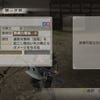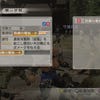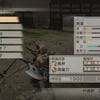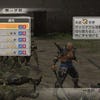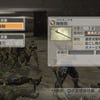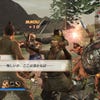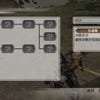Dynasty Warriors 7
Death by a thousand cuts.
Each enemy officer you defeat nets Skill Points for your character which can be spent upgrading his or her abilities, adding extra Musou gauges, or extending the potential length of combos you can execute. The skill tree is limited and the same for every character, but as an RPG-lite touch, it's a welcome one.
Likewise, some enemy officers drop new weapons that can be switched in and out of your armoury. While each character has his or her own weapon proficiencies, it's possible to use any of the 36 weapon types in the game with any character. Weapons themselves have 'seal' slots into which you can drop stat-upgrading buffs, increasing your character's strength or defence when you have used the weapon for long enough. So the potential for statistical strategy is present, if a little light.
On the battlefield, Koei attempts to upset the repetitive rhythm of running towards the next officer skirmish by introducing environmental hazards or tasks. You might need to commandeer a catapult in order to knock down some giant wooden gates or avoid a hail of giant boulders.
These moments lack grace and polish, the majority of effort having been put into the fighting system. Combined with some very noticeable pop-up (whereby entire battalions of enemies only become visible when you are 20 metres away), these visuals give the game an anachronistic, low-rent feel, even if it is the best-looking title in the series to date.
Outside of Story Mode, however, a great deal of effort has been made to add longevity in Conquest Mode, a generous and well-crafted offshoot to the main campaign. Ignoring narrative entirely, Conquest Mode presents players with a map of China divided into hexagon tiles.
Each tile represents a city, battle or series of battles that must be completed in order to unlock access to the adjacent tiles. The aim of the game is to unlock every tile on the board, something that can be achieved with a friend either in split-screen or online co-op.
In Conquest mode you are free to play as any officer you have unlocked thus far. When you make it to a new city tile you can upgrade weapons, purchase animal companions (both mounts and combat 'pets') and meet up with other officers with whom you have formed a bond through fighting together on previous 'tiles'. Battles are more diverse here than in the main campaign, with targeted objectives such as escorting a particular character to safety or capturing a specific base, making this the more interesting mode in the game over the long haul.
However, over that long haul, Dynasty Warriors 7 does suffer from repetition and a troubling failure to introduce new techniques or nuances to master. While you can unlock additional Musou attacks by using specific weapons for long enough, there's very little long-game development here, aside from attempting to max out all of the 60-odd officers in the game and collect every cinematic, weapon and seal.
With the minute-to-minute play cycle of Dynasty Warriors so fully developed already, it's a disappointment to find very little refinement to long-view progression. Dynasty Warriors 7 may be a bulky proposition, but for all the overwhelming scale, it doesn't offer much of a journey.
This remains the series' greatest challenge. Until Koei can refine the long game, Dynasty Warriors will continue to slip from relevance, in much the same way as Xiahou Dun's good eye, or Sun Quan's colourful beard, have done before it.

